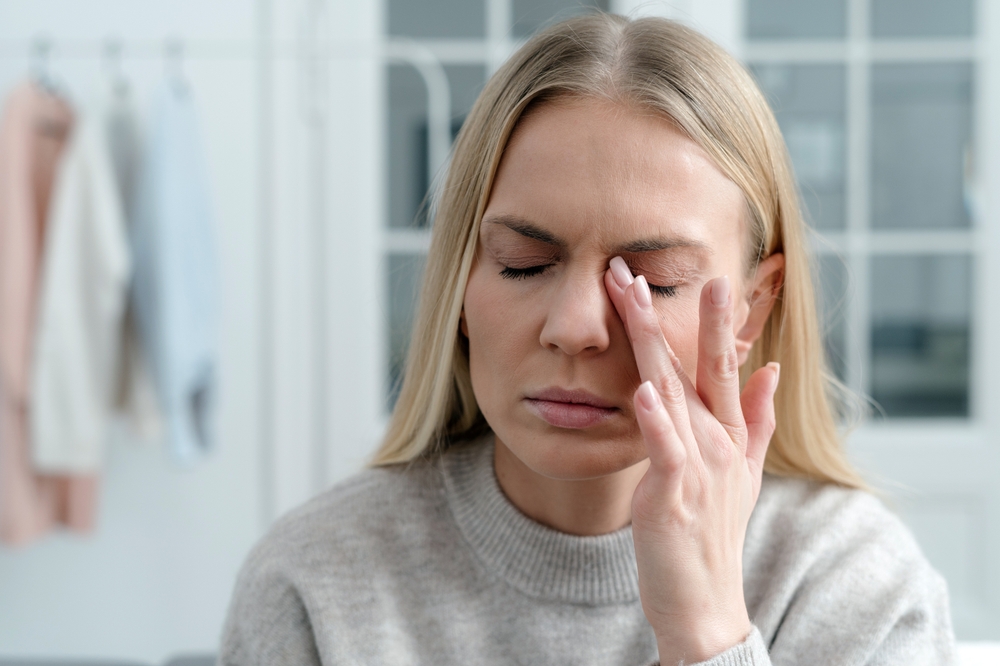
Imagine having sand in your eyes all the time. That is how it feels to have dry eye syndrome. Your eyes are constantly dry, irritated, and burning. You cannot wear contact lenses or stare at a screen without discomfort. You blink a lot or rub your eyes to get some relief, but nothing seems to help.
Dry eye syndrome affects millions of people globally. It happens when your eyes do not produce enough tears or when those produced evaporate too quickly. Tears are essential for keeping your eyes moist, healthy, and comfortable. Your eyes can become inflamed, infected, or damaged without enough tears.
What Causes Dry Eye Syndrome?
Dry eye syndrome can have many causes. Some of the most common ones are:
Aging: Your tear glands produce fewer tears as you age, and your tear quality declines.
Hormonal changes: Women are prone to dry eye syndrome, especially during pregnancy, menopause, or when using birth control pills.
Environmental factors: Dry air, wind, smoke, dust, or allergens can irritate your eyes and make them dry out faster.
Medications: Some drugs, such as antihistamines, antidepressants, blood pressure medications, or acne treatments, can reduce tear production or cause dry eye symptoms.
Health conditions: Some diseases, such as diabetes, rheumatoid arthritis, thyroid problems, or Sjogren’s syndrome, can affect your tear glands or immune system and cause dry eye syndrome.
Eye problems: Some eye conditions, such as blepharitis, conjunctivitis, or eyelid disorders, can interfere with your tear film or eyelid function and cause dry eye syndrome.
Lifestyle habits: Some habits, such as staring at a computer screen for long hours, wearing contact lenses for too long, or not blinking enough, can strain your eyes and reduce tear flow.
What Are the Symptoms?
Dry eye syndrome can cause various symptoms that affect your vision and comfort. Some of the most common ones are:
Eye dryness
Irritation
Sensitivity to light, wind, smoke, or air conditioning
Blurry vision
Heavy or fatigued eyes
Watery eyes
How to Treat Dry Eye Syndrome
You can try different treatments to make your eyes feel better if you have dry eye syndrome. The severity and cause of your condition will determine your treatment.
Artificial Tears
These eye drops act like your natural tears and moisten your eyes. Use them as often as you need to ease your dryness and irritation. They can also protect your eyes from further damage or infection.
Warm Compresses
You put these warm and wet pads on your eyelids for a few minutes. They can help melt any gunk or oil that blocks your tear glands and make your tears flow better. They can also soothe your eyes and reduce inflammation.
Eyelid Hygiene
Use a gentle cleanser or wipes to remove dirt or bacteria that can cause inflammation or infection from your eyelids. This can also prevent eyelid problems affecting your tear film or eyelid function.
Some treatments may require a prescription from your doctor. These include medications, punctal plugs, and surgery.
Conclusion
Dry eye syndrome can be a frustrating and uncomfortable condition that affects your vision and quality of life. Early diagnosis of your condition and proper treatment can make a big difference.
For more on dry eye syndrome, visit East Vancouver Eye at our Vancouver, Washington, office. Call (360) 449-3937 to schedule an appointment today.







